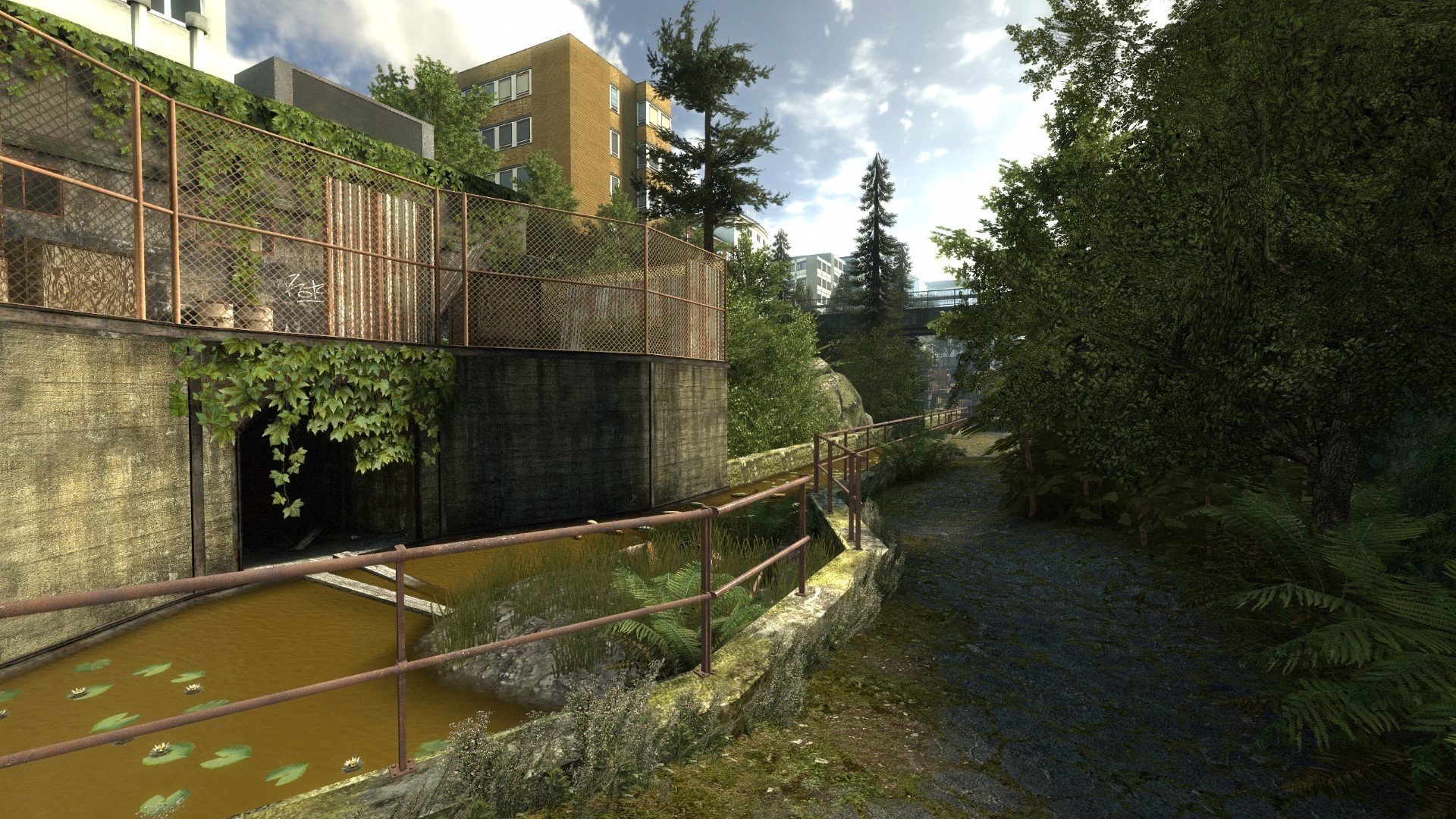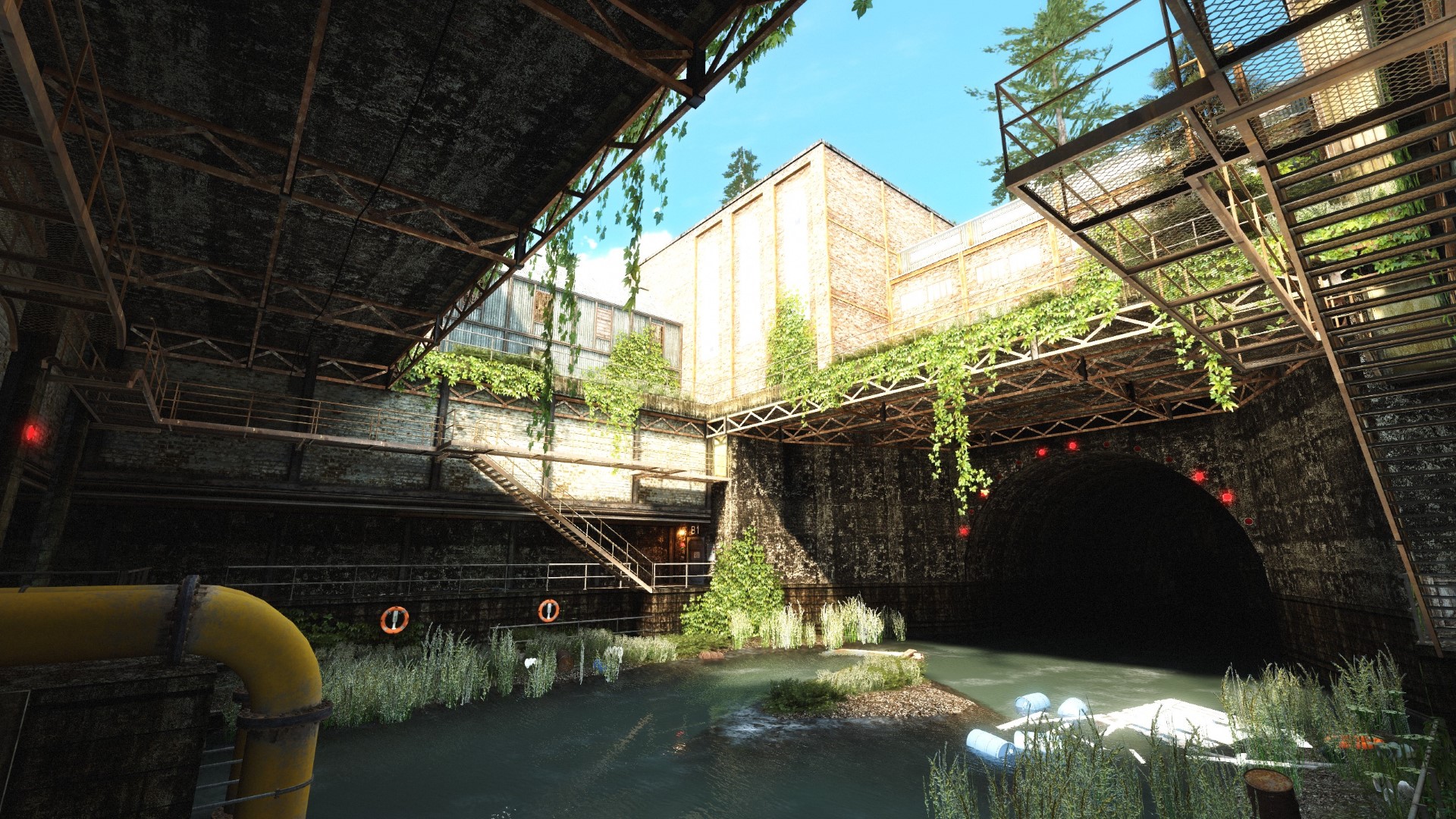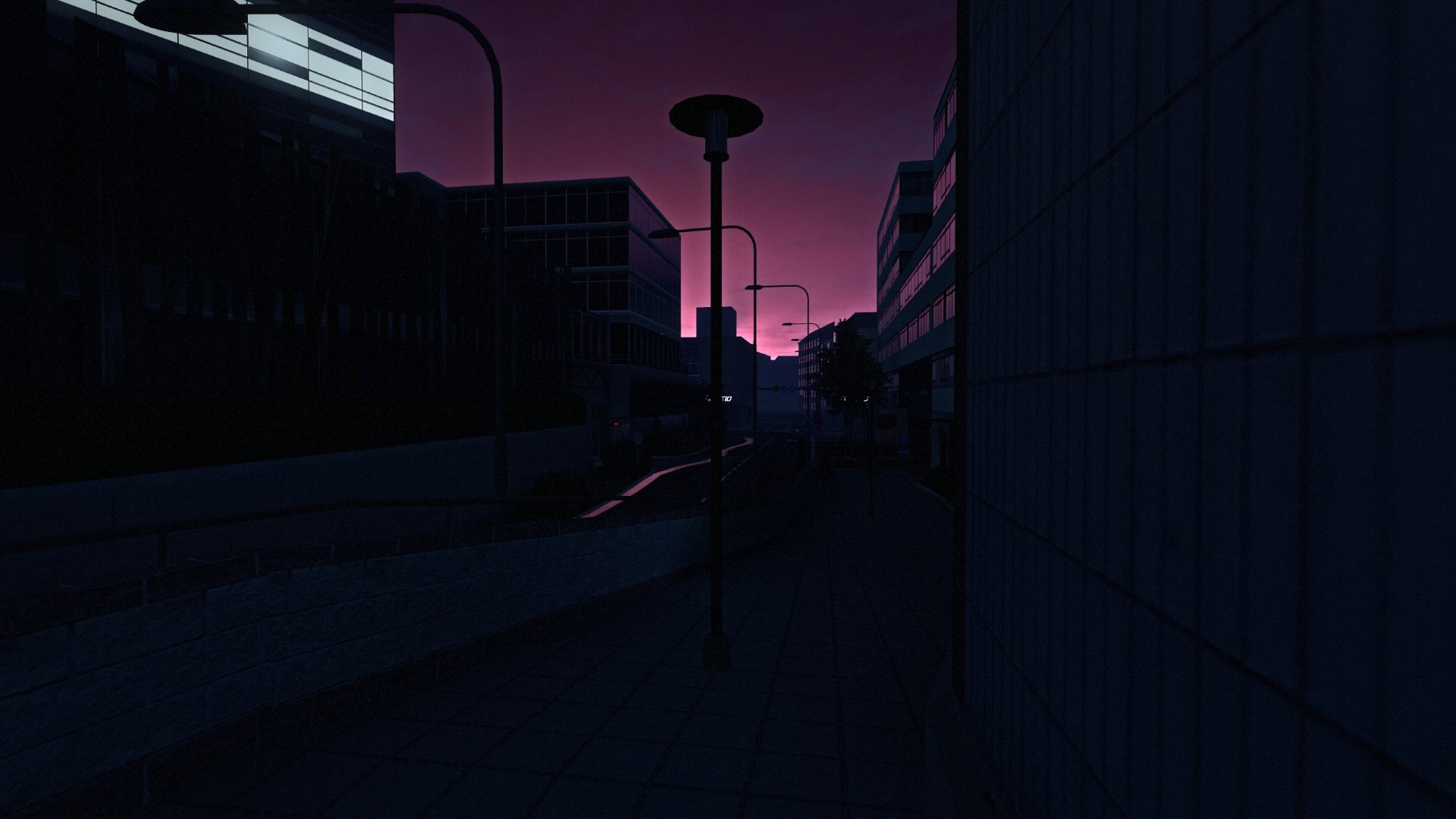Apologies for the cliche title.
I fucking love indie games. Large studios have always been financially motivated above all else, of course, but it does seem like there are less creative risks being taken by a lot of those who make the financial decisions. This isn't limited to games - big media productions have turned into blatant box-ticking exercises, to the point that it all gets mushed together. I can't tell most live service games apart.
And while I've been able to enjoy newer games since upgrading my machine in 2021 (from a 2013 machine), I have felt something similarly unfulfilling from a lot of them. Specifically, a lot of games are unnecessarily taxing on the system. Even the kusoge titles of our modern age, janky simulator slop games which I unfortunately enjoy, are being designed to "look" good, nominally, with no distinctive reason to. All these games look like a generic example of what can be done with the engine they use.
Does this look like anything to you?

The above is a store image from Ship Graveyard Simulator 2 (2023) - a game where you mindlessly zone out to podcasts while mimicking one of the most brutal and inhumane ways that real people right now are torturing a living out of themselves with. It really winds my GPU up, for the purpose of showing me graphical slop on screen. I'm not talking about poor optimization, there's tons of assets and effects on screen, but it's not in the service of any vision. I've put a few dozen hours into this, but please, heed this explicit not-recommendation.
The gameplay mostly amounts to walking up to assets and hammering away at them. Sometimes sawing or blowtorching, and occasionally interrupting that to deal with a gimmick.
How did I even find this software? Well, I played the predecessor, Ship Graveyard Simulator (2021). I'd found it in a cool little bundle, like I do with most of my games. The new one is an improvement, even if I can't say I think you should play it. You shouldn't.
I don't think it's necessary to shit on something to compliment something else, but these are the two experiences I find myself jumping between this past while.
The preamble is over.
I'm listening to the chilled and brooding sounds of Macroblank's エコーチャンバーパーティー as I write this.
INFRA... is so much more than it lets on.
INFRA (2016) falls in the controversial category of Walking Simulators, an epithet-turned-genre of first-person games that intentionally eschew action sequences (and often, action altogether). Instead of a soldier gunning around Afghanistan or an explorer dungeoning around Skyrim, walking simulator protagonists usually don't carry weapons around. The games are more about absorbing an environment or story than the experience of doing something like shooting a bad guy.
There are levels to that. Dear Esther is a 2008 mod for Half-Life 2, today regarded as the first modern walking simulator, later turned into a full Unity game in 2012. I remember seeing a lot of conflicting discussion about it, with people both praising it for doing something new and deriding it for being "nothing". Ok, you walk around an abandoned island out in the Hebrides, and you listen to a bit of cryptic narration... is that it? Is this even a game? You only move! At a glacial pace no less. (I loved Dear Esther when I played it in 2022 when they gave it away for free.)
For me, Dear Esther was about experiencing this environment. The narrator recites bits of letters between unclear characters, a lot of it prose that feels like it has weight behind it. The island is beautiful, if dark, and you are forced to look at it. There is definitely a story of psychological anguish told by the narrator, with no real scares. The twist, of course, is that replaying the game will confuse you further: the narrated passages are different. There are different clips of narration for each cue. The plot simultaneously thickens and becomes less coherent. Having too many data points starts making it harder to piece together a straightforward story from what the game itself calls the ramblings of a madman.
You leave the world of Dear Esther feeling like you've just come back from another world. And it's not like stepping away from something fantastical like DOOM (2016) or Ghost of Tsushima (2020) - Dear Esther is very grounded in reality, and that has a strong impact on how you internalize its story, should you give it the time of day.
Being a mod for Half-Life 2 originally, Dear Esther was designed in the Source engine - originally designed for first-person shooters, for worlds where most of what moves will kill you if you don't kill it first. When taken out of this context and used for something different, the worlds that can be made with the Source engine can feel a bit... empty. Or lonely. I've seen this expressed online before.
INFRA is, by most people's understandings, a walking simulator. It's tagged as such in Steam and it's probably why Steam recommended I check it out in the first place.
Here's a canal. I love how much care this game puts into oft-ignored areas that keep our lives moving. It's kind of the point.

INFRA's protagonist is a structural engineer who is sent out to survey some of the city's old infrastructure on a typical workday. You can use a flashlight (for about a minute before running out of batteries). You take photos of exposed rebar and safety hazards with your camera (also limited by battery).
You can't jump very far, or swim in waist-high water. You can't knock down doors or even pick their locks. There are no abilities, attacks, skill trees.
You're just some guy. Markku. Nominally Finnish, with a very Hungarian accent.
All of INFRA is extremely down-to-earth. There are no enemies to vanquish and nothing (mostly) will chase you. You can ease yourself into a city, Stalburg, that feels ripped straight out of the real world.
Instead of outlandish feats, you read instructions for abandoned pumps and generators, left behind by missing operators. There you go, that's your puzzle fill for this game. For the most part, the suspension of disbelief this game asks from you is only the smallest amount, for repeated, plausible, good luck - Markku always has an exit from a dangerous area. There's always a key or a grate or something. But otherwise, almost everything is on board.
And one cool thing about the machinery taking center stage in a realistic way is that the notes left behind by previous users (and the steps to fix issues) are not necessarily straightforward: the techs who operated these machines only know so much, so sometimes you have to put two and two together to operate the machines in the game, including knowing what information to use and what information is outdated, invalidated by some factor, or plain wrong. Nothing is too difficult, but it is cool when it comes together.
And the levels themselves are cool. I don't think there's any groundbreaking game design, but since the story mostly takes part in empty abandoned spaces, both tight and huge, I can see a lot of people who are into that liminal space aesthetic getting a lot out of this game's environments. Especially since it's from before those took off, so there's no cheap references or callbacks to popular imagery. It's just genuinely set in odd spaces, just out of the view of people's daily lives.
INFRA tells the story of a city hamstrung by corrupt officials and industrialists, whose mistakes and secrets from the 1980s were buried until you happen upon them. And it's not just poor building. There is much more going on under the surface, but this is what you start and end with. And because this game is so grounded, when something remarkable happens, it hits you with its full impact. When you stumble upon more than just shady engineering, you feel like Markku would, discovering something his job never prepared him to deal with.
And when you start to understand the quirkiness of the world Stalburg is in, it's much more interesting - because that weirdness has to interface and interact with the realistic side of the world. Under this Counter-Strike surface, there is a Cosmo D Universe full of its own machinations.

As I've played this over the last dozen days, I've been repeatedly telling people around be about it. I've taken to describing it like this:
The more I think of it, the more I think of Half-Life as a quintessentially American piece of fiction. You play as a hyper-competent engineer who walks into the office one day and, following a grandiose physics experiment, has to shoot his way out, gunning down all manner of aliens and soldiers.
INFRA is basically the European answer to Half-Life: You play as a decently competent engineer who has to examine the crumbling roots of the urban fabric. The great evil here is not a transdimensional alien invasion. It's civil engineering.
INFRA was made in the Source engine, over a decade after Half-Life 2. On a technical level, I love what this means for the game.

Sure the textures and models aren't up to the level that even a shitty game in a "modern" engine can be expected to have. The lighting especially has a few egregious moments when the veil drops and you can see the now two-decade-old technology slip from behind the curtain. But as I hope the screenshots can attest to, the game looks... Really really good!

Not a single fan winds up in my computer when I'm blasting through this game at 1440p. There is one level loading bug, and the (rarely seen) character models can sometimes feel a bit off, but otherwise, on a technical level, this is really all I want out of a game's graphics.
Really. This is all I want a game to look like. Graphics kind of peaked here, artistically. This is a level of fidelity that is excellent for games, in my opinion.
Now, the kicker. INFRA took me over 30 hours to complete. Walking simulators are rarely longer than one or two evenings' worth of gameplay, but this just goes on and on and (in my opinion) doesn't get old.
I still want to play it again and discover more of the game's secrets, which I've intentionally left out of this post. The devs have really poured a lot of love and intention into making this game. Which makes it all the more surprising that I, an enjoyer of walking simulators, haven't really heard much about it. I very easily could have not stumbled upon this game.
I'm not totally sure how to structure this post, or even what I should or should not mention. It's a weird game to talk about. There's a lot unsaid here about INFRA, because I just don't know how to say it. I've gotten a lot out of this game that I haven't felt very often from video games, especially not as an adult. Games can be a storytelling medium with limitless potential, and INFRA is not bogged down by a lot of what has been bloating games and holding them back. It's a pure experience - and not just that, it's a good one.